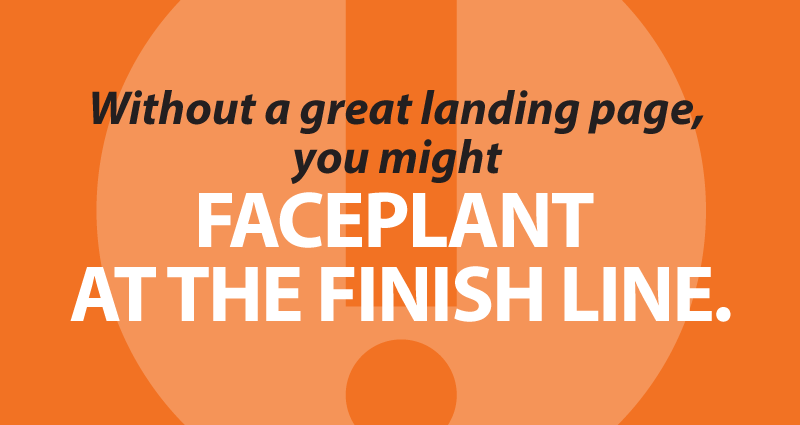
Building a Killer CU Landing Page | Digital Marketing Best Practices
You’ve built the perfect marketing campaign, a perfectly orchestrated symphony of traditional and digital media, targeted to a nice juicy list of hot prospects. People are clicking and tapping, but without a great landing page, you might faceplant at the finish line.
Here’s how to build a credit union landing page that turns a list into members, loans, and growth.
Landing pages are all about action
A landing page is a page on your website where people can actually DO something after tapping a link or entering a URL. For example, they might be able to apply for a loan, sign up for overdraft protection, ask for help with debt consolidation, or reserve a spot in a seminar.
Track as much as possible
Use Google Analytics’ custom URLs to track where traffic to your landing page came from and how they got there. If you have external links (like third-party loan apps) on your landing page, make sure you set up event tracking so you can see where they went.
Give people one easy thing to do
If they’re here, your marketing worked; get out of the way and give them one real, concrete, simple action to take to reach their goal. A page that only contains a bunch of information with a weak call to action doesn’t have much value to you or the member.
Offer choices
At the same time, think about folks who aren’t sure yet, or aren’t ready to commit 100%; what else might they need to know? Maybe instead of filling out a full app, they can use chat or a simple form to contact someone with any remaining questions. Give different levels of options for engagement when it makes sense.
Make sure it’s easy, fast, and mobile-friendly
If you’re like most CUs, around 50% of your website visitors are using mobile or tablet devices. Make sure they can still do what you want. Don’t just boot them out to an online loan app with 427 nosy questions that doesn’t work on a phone anyway.
For example, a simpler option like a “Loan Request” form can be very effective here. Ask for name, phone, email, amount, and purpose, then contact the member to finish the rest. It’s a chance to give great service, ask questions, and perhaps even do a little cross-selling.
Consider A/B testing
Want to make your killer landing pages even better? Experiment with different content, colors, layouts, headlines, etc. to see what converts better. Sure, it’s more work to create two or more landing pages, but you might be surprised by the value of the results.
Most email marketing setups can do A/B testing by directing different groups or random people to different landing pages. Or if you’re using a mix of channels, your website should be able to do this with a plugin.
Keep it part of your site
For a credit union, your landing page is a lot more credible if it’s a normal web page, with all the usual navigation, footers, and other elements people are used to seeing.
And don’t break bookmarking or the “back” button with a generated or one-time URL. If people want to go check rates or refresh their memory on other products elsewhere on your site, let them; maybe they need to get more info or think about it before deciding to act.
If you’re using third-party services like online loan apps, do everything you can to make sure these services match your brand, and test thoroughly to make sure everything works smoothly.
Use a simple URL
Use a simple base URL for your landing page so people will be able to tell where they’ll land when they click. Instead of something like awesomecu.org/promoQ13/ , use a URL more like awesomecu.org/awesomesauce/ .
Simple, memorable URLs are also much easier to use in offline media where people can’t click, like postcards, radio, or TV.
And when the promotion is over, make sure the URL still does something that makes sense, just in case someone has an old email or bookmark. If it’s a limited time offer, update the page content to explain and offer alternatives. At the very least, redirect the promotional URL in a way that makes sense and won’t give an error.
- CU Numbers Need Marketing Love, Too - April 2, 2024
- Will it blend? The only CU fintech question that matters. - February 13, 2024
- Solving the CU marketing “now what?” problem - January 16, 2024
